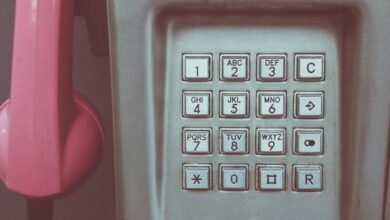Who Called Me From 6153389563, 6153389567, 6153823601, 6154374773, 6154887985, and 6154941030? Verify Now

Numerous individuals have reported receiving calls from various numbers, including 6153389563 and 6154941030. These calls raise concerns about potential telemarketing or scam activities. Understanding the origins and legitimacy of these calls is crucial. Investigating the reasons behind such communications can reveal patterns and help individuals protect their privacy. What steps can one take to verify these numbers, and what implications arise from ignoring them? The answers may be more significant than anticipated.
Understanding the Caller ID and Number Lookup
Although Caller ID has become a ubiquitous feature in modern telecommunication, its reliability and accuracy often warrant scrutiny.
The limitations of caller ID features can obscure true identities, complicating number traceability. Users seeking to reclaim their freedom from unwanted calls must recognize these shortcomings and consider supplementary tools for verification.
Thus, understanding caller ID’s complexities is vital for informed decision-making in communication.
Common Reasons for Receiving Unknown Calls
What drives the surge in unknown calls that disrupt daily life?
Increasing telemarketing scams exploit loopholes in robocall regulations, targeting unsuspecting individuals.
Many calls originate from automated systems, designed to bypass traditional call screening.
The anonymity afforded by technology emboldens scammers, prompting a rise in intrusive communications that challenge personal privacy and autonomy, leaving recipients questioning the legitimacy of their callers.
Steps to Take If You Receive Suspicious Calls
The rise in unknown calls has prompted individuals to seek effective strategies for handling suspicious communications.
To protect personal freedom, one should utilize call blocking features on their devices. Additionally, caller verification methods can help ascertain the legitimacy of incoming calls.
Reporting persistent offenders to authorities further enhances community safety, fostering an environment where individuals can confidently reject unwanted interruptions.
Conclusion
In the labyrinth of unknown calls, numbers like 6153389563 and its companions echo through the air, cloaked in mystery and potential deceit. Each ring may signal a telemarketer’s pitch or a scammer’s trap, weaving a web of uncertainty. By taking proactive measures—blocking, verifying, and reporting—individuals can illuminate the shadows where these calls lurk. Vigilance transforms the cacophony of unwanted interruptions into a fortress of privacy, empowering the receiver to reclaim their peace amidst the noise.




